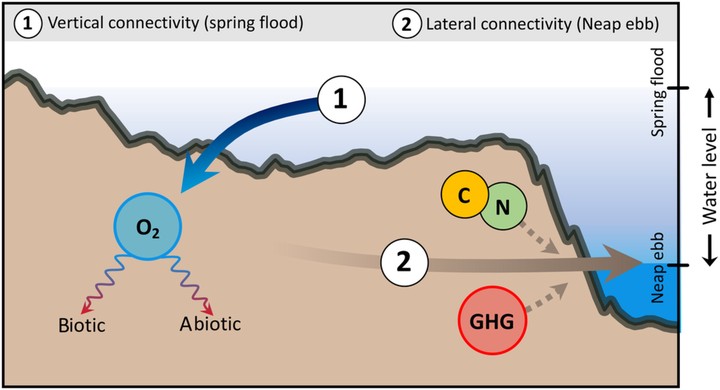Biogeochemical control points of connectivity between a tidal creek and its floodplain

Abstract
As global climates shift, coastal systems experience changes that alter function within the tidal zone. However, it remains uncertain how changes in tidal extent and magnitude will alter coastal biogeochemical cycling. We present high‐frequency data collected in situ along two transects across a tidal creek and floodplain to capture how vertical and lateral connectivity changes act as biogeochemical control points. Using wavelet coherence analysis, we identified short periods of vertical tide–floodplain connectivity during spring tides followed by extended periods of floodplain isolation from tides. During a drier period, neap tides were linked to lateral creek–floodplain connectivity, detected by discharge of saline, oxygen‐depleted groundwater to the creek on ebb tides. We estimate that up to half of creek water throughout the tidal cycle was associated with floodplain drainage. From point measurements of carbon, nitrogen, and greenhouse gases along the creek–floodplain transect, we infer that lateral connectivity functions as a biogeochemically significant control point.